Reimagining Drug Discovery: How Data, AI, and Digital Labs Are Transforming R&D
Drug discovery is a complex, multi-step process that involves identifying disease mechanisms, finding promising compounds, and optimizing leads for clinical trials. At Agilisium, we leverage Gen AI, predictive analytics, and computational chemistry to streamline this journey. Our AI-driven solutions enhance literature review, target identification, data accuracy, and drug repurposing, ultimately reducing time, cost, and risks associated with drug development.
For decades, drug discovery has been a process of careful iteration, where insight meets experimentation, and chance often dictates the breakthroughs. But as datasets grow, experiments scale, and diseases become more complex, the old linear way of working is showing its limits. Today, a quiet but profound transformation is underway: AI is reshaping how discovery happens, not by replacing scientists, but by redefining how science is done.
From early disease understanding to lab automation and drug repurposing, AI is weaving intelligence into every layer of R&D. What follows is a grounded view, not a promise of instant miracles, but a reflection on how AI is genuinely helping the industry think faster, decide smarter, and fail less expensively.
Data-Driven Disease Understanding: Connecting Omics, Analytics, and AI for Target Discovery
The foundation of every successful drug is a well-understood disease. Traditionally, researchers would spend years mapping biological pathways and correlating genetic or proteomic signals to observable symptoms. Now, with AI layered on top of omics data, the process is becoming more exploratory and continuous.
AI doesn’t replace molecular biology, it enhances it. Machine learning models can integrate genomics, transcriptomics, and proteomics data to spot connections that human analysis might miss. Instead of treating each dataset as a silo, algorithms look across them for patterns that explain why a pathway misfires or a protein behaves anomalously.
This means researchers can now generate hypotheses faster, validate mechanisms more confidently, and visualize disease biology at a scale that was once unthinkable. Yet, it’s important to remember: AI doesn’t “discover cures.” It makes the search more informed, a sharper compass in the same vast sea.
Literature Review, Knowledge Mining & Patent Intelligence
Every year, millions of new scientific papers are published. No researcher, however dedicated, can read even a fraction of them. Here, AI quietly performs one of the most valuable tasks in discovery, keeping the scientific conversation coherent.
Natural language processing (NLP) algorithms now help summarize, tag, and cross-reference publications, pulling out relevant findings in seconds. When coupled with knowledge graphs, AI can map the relationships between molecules, mechanisms, and outcomes. What once required a team of analysts can now be achieved with a well-trained model and a curated dataset.
Even in patent intelligence, AI adds a new lens. It can scan claims and prior art to show where innovation is already crowded and where white space exists. For R&D leaders, this is less about speed and more about making better strategic bets, avoiding redundancy, focusing on originality, and understanding the competitive landscape with clarity.
Target Identification and Selection: Rethinking the Starting Line
The earliest and riskiest decision in drug discovery is choosing which target to pursue. Historically, this involved intuition guided by a patchwork of biological data and precedent. AI is bringing a level of quantifiable evidence to this stage.
By aggregating genetic, chemical, and clinical data, AI models can estimate how “druggable” a target might be. These systems score potential targets based on known mechanisms, prior failures, and structural similarities. Rather than replacing scientific judgment, AI provides a rationale framework, one that helps teams ask smarter questions before committing millions of dollars downstream.
The real benefit lies in iteration: as new data emerges, AI updates its understanding. The target-selection process becomes dynamic, not static, a conversation that evolves as science does.
AI-Powered Computational Drug Design: From Virtual Screening to Structure Prediction
If the lab is the heart of drug discovery, computational modeling is its nervous system. In the past, scientists relied on physical assays and small virtual screens to identify “hits.” Today, AI-driven computational design is transforming both scale and precision.
Deep learning models trained on known compounds can predict how new molecules will interact with specific targets. Virtual screening, which once meant testing thousands of candidates, can now simulate millions in a matter of hours. Structure-based design tools use generative AI to propose novel molecules that adhere to known pharmacological rules shortening the gap between ideation and synthesis.
This isn’t magic; it’s acceleration. AI doesn’t guarantee success, but it helps teams fail faster and learn smarter, filtering out unlikely candidates early. The real win is not just speed, it is the confidence that when a molecule moves forward, it does so on stronger evidence.
Next-Gen LIMS: The Digital Backbone of Modern Research Labs
In the lab, data is both the raw material and the byproduct of discovery. Historically, laboratory information management systems (LIMS) were simple tracking tools, storing samples, logging tests, and maintaining compliance. Now, they are evolving into digital command centers.
AI within modern LIMS platforms supports pattern recognition and workflow optimization. It helps scientists trace data lineage, detect anomalies in results, and maintain data integrity across instruments and experiments. By doing so, AI transforms the lab from a collection of silos into a connected ecosystem where insights move as freely as samples.
It’s not about flashy automation, it is about reliability. A lab that understands its own data is one that makes fewer mistakes, repeats fewer tests, and can trust its results. That is where AI quietly shines, in ensuring the science stands on solid ground.
Digital Biomarkers: Turning Continuous Signals into Clinical Insight
As wearables and remote monitoring devices become commonplace, the frontier of discovery is moving from controlled environments to real life. Digital biomarkers, quantifiable physiological or behavioral data captured by sensors, are emerging as valuable companions to traditional clinical endpoints.
AI helps interpret these signals, identifying subtle correlations between patient behavior and disease progression. For instance, movement patterns from a smartwatch can reveal early signs of neurodegenerative decline, while voice tone analysis may hint at mental health changes.
The key here is not replacing clinical endpoints but enhancing them. AI allows scientists to see disease dynamics continuously, not just at check-ins. It provides a living layer of insight that complements what’s observed in the clinic, leading to more responsive and personalized interventions.
Drug Repurposing with Predictive Analytics and Real-World Evidence
Bringing a new molecule to market takes years and billions of dollars. Drug repurposing offers a faster, lower-risk path and AI is making it smarter. Instead of relying solely on serendipity, researchers now use machine learning to connect the dots between existing drugs and new disease pathways.
By analyzing real-world data such as patient records, claims, and safety reports, AI identifies patterns of unexpected efficacy or safety. For example, if a medication consistently shows benefits outside its intended use, models can flag it for preclinical validation. This accelerates hypothesis generation and focuses attention where the data already points.
Repurposing is not about chance anymore, it is about systematic exploration. AI makes it possible to revisit the known universe of molecules with fresh eyes and ask, “What might we have missed?”
Personalized Therapeutics: Aligning Discovery with the Individual
No two patients respond identically, yet for decades drug development assumed they did. Today, AI is changing that assumption. By combining clinical data, genetics, and molecular profiles, algorithms can help identify which subgroups of patients are most likely to respond to a therapy or suffer adverse effects.
This level of precision guides not only clinical trial design but also earlier discovery work. When researchers understand patient variability upfront, they can design more focused studies and avoid wasted effort. Personalized therapeutics is not about building a drug for every person, it is about ensuring that every person receives the right drug.
AI’s role here is pragmatic: to make personalization operationally feasible, turning what used to be statistical noise into actionable insight.
The Real Shift: From Information to Intelligence
What ties all these advances together is a simple truth, AI doesn’t replace science; it enhances scientific reasoning. It shifts the role of data from a historical record to a real-time advisor. When used wisely, it narrows the gap between hypothesis and proof, between idea and evidence.
The most forward-thinking R&D organizations aren’t chasing buzzwords. They are building the connective tissue that lets insights flow securely and meaningfully across teams, systems, and stages of discovery. This is where Agilisium places its focus, helping life sciences companies make their data work harder, faster, and more intelligently.
From Insights to Decisions: A Holistic Close
All of this only works when the ecosystem stays connected. That’s why we invest in three core enablers that bring AI led discovery to life responsibly.
Our Insights Generation Agent helps researchers cut through information overload, aggregating journals, omics databases, and real-world data into concise, context-aware insights.
Our Content Generation Agent ensures that every insight turns into usable communication progress updates, documentation, and decision briefs that align teams effortlessly.
And our Data Observability backbone guarantees that the data itself remains accurate, compliant, and traceable from lab bench to analytics platform.
Because in the end, AI in discovery isn’t about replacing intuition, it’s about giving it sharper tools.
If you are looking to modernize discovery without losing the craft that makes it work, we would love to compare notes. Talk to an expert at Agilisium or write to sales@agilisium.com. You can also learn more at www.agilisium.com.






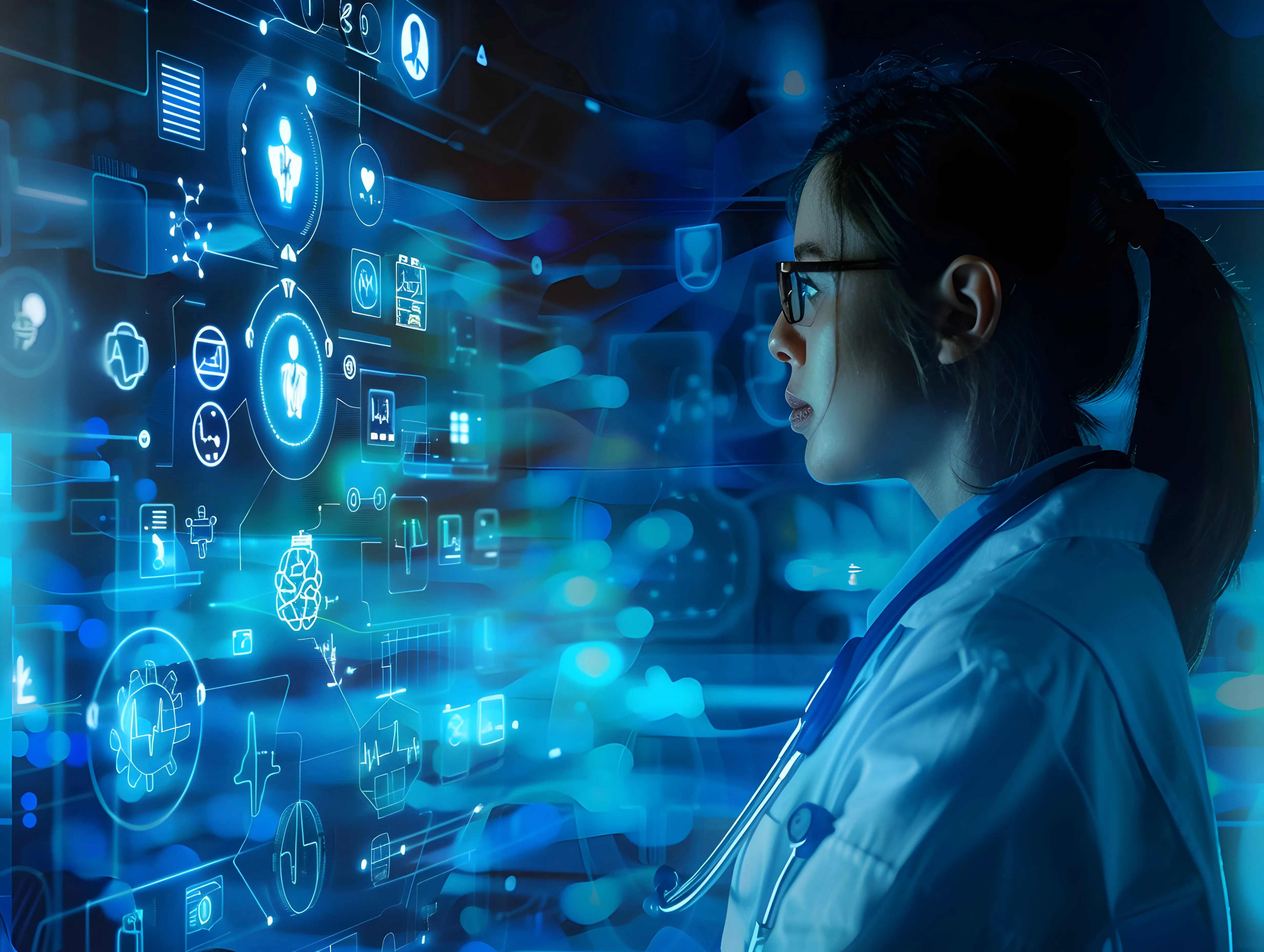

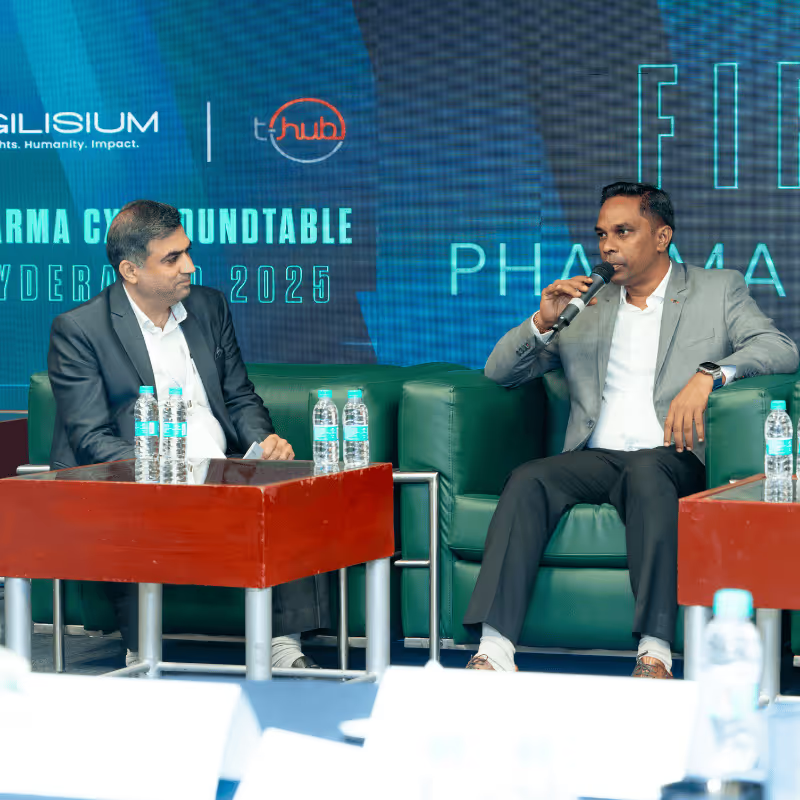

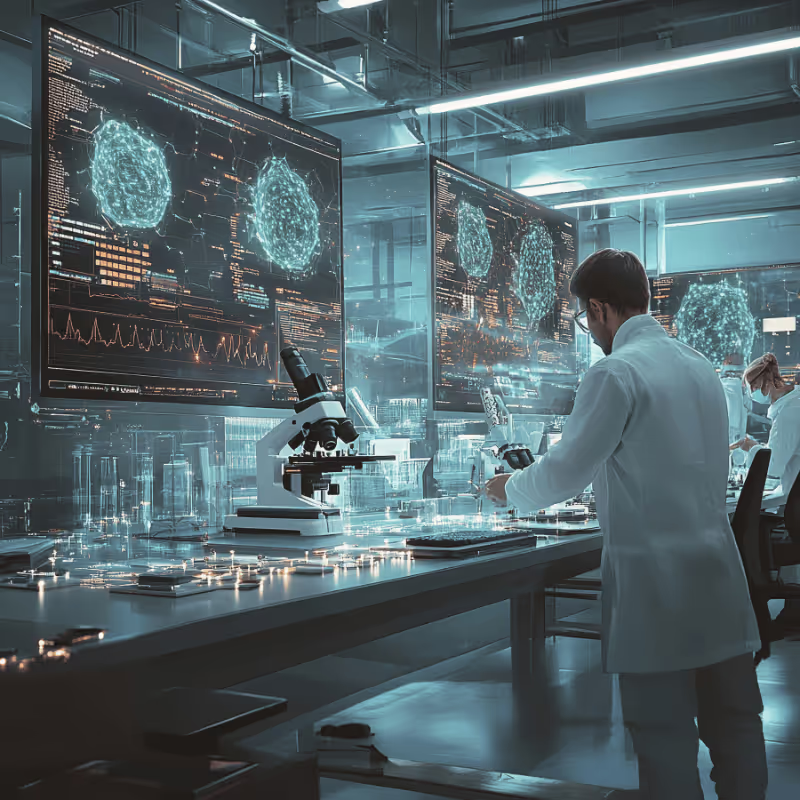
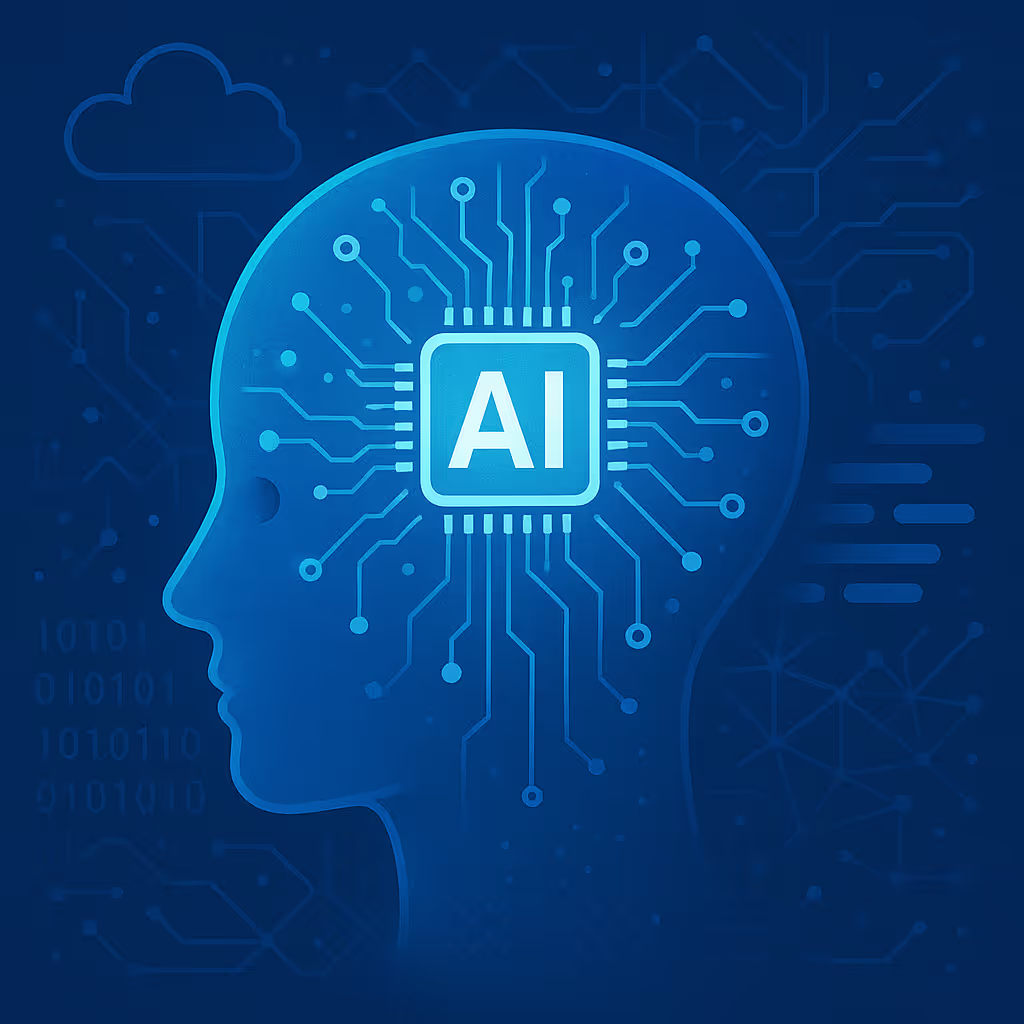

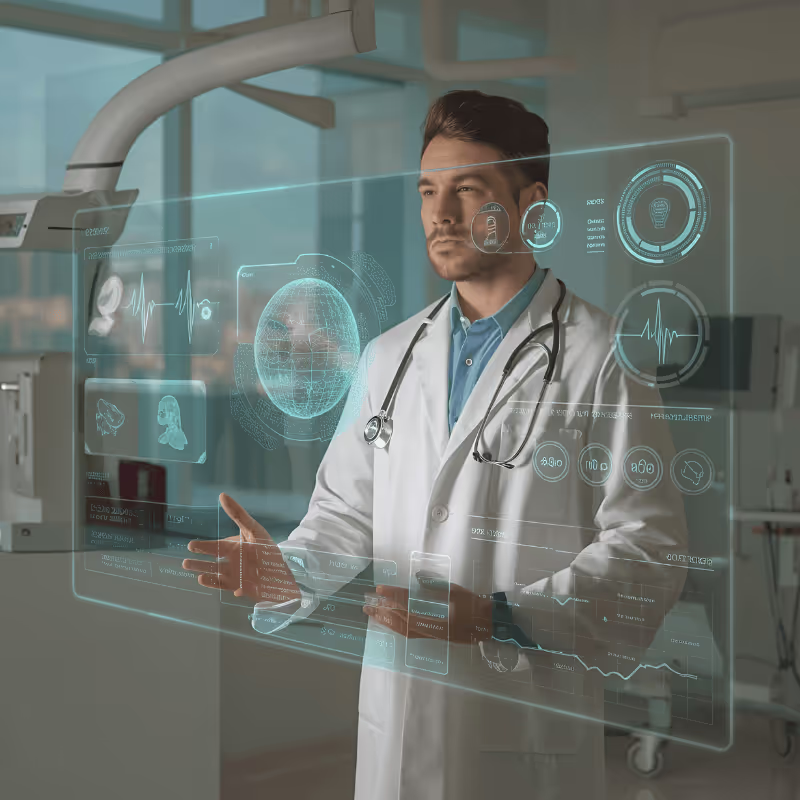
%20(7).avif)



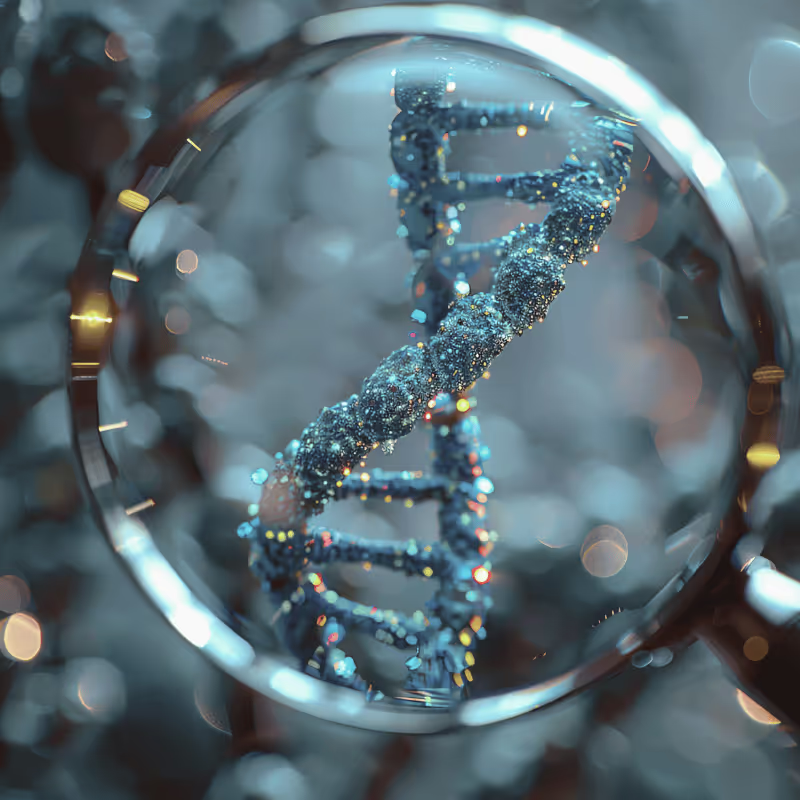

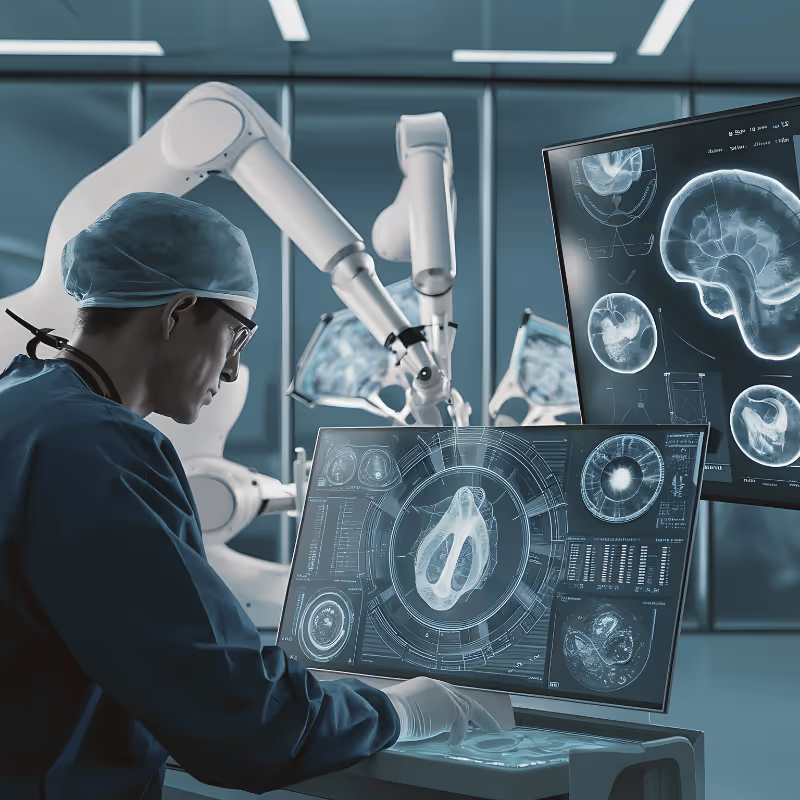


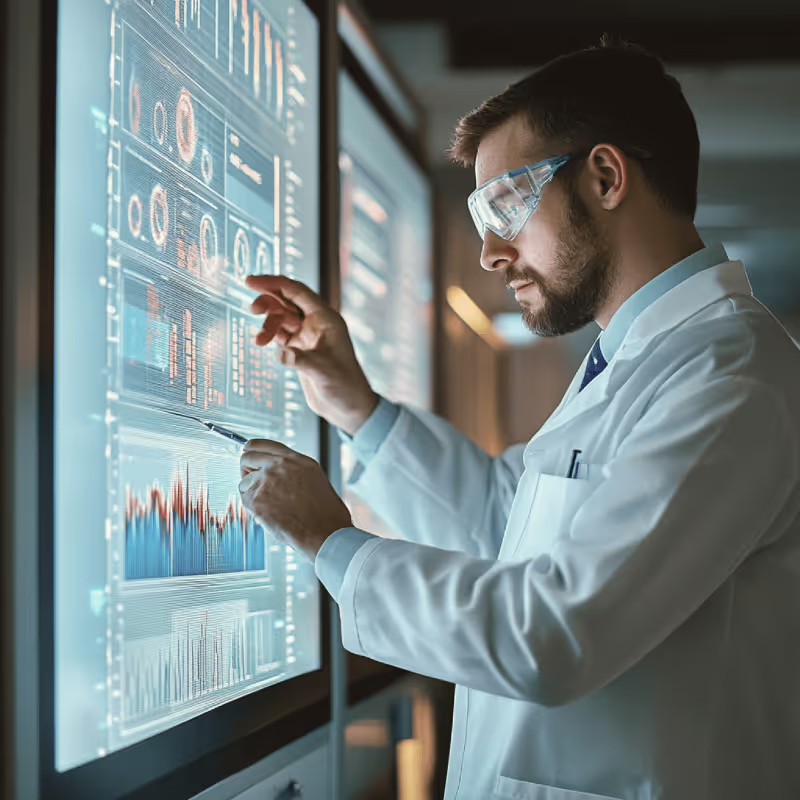





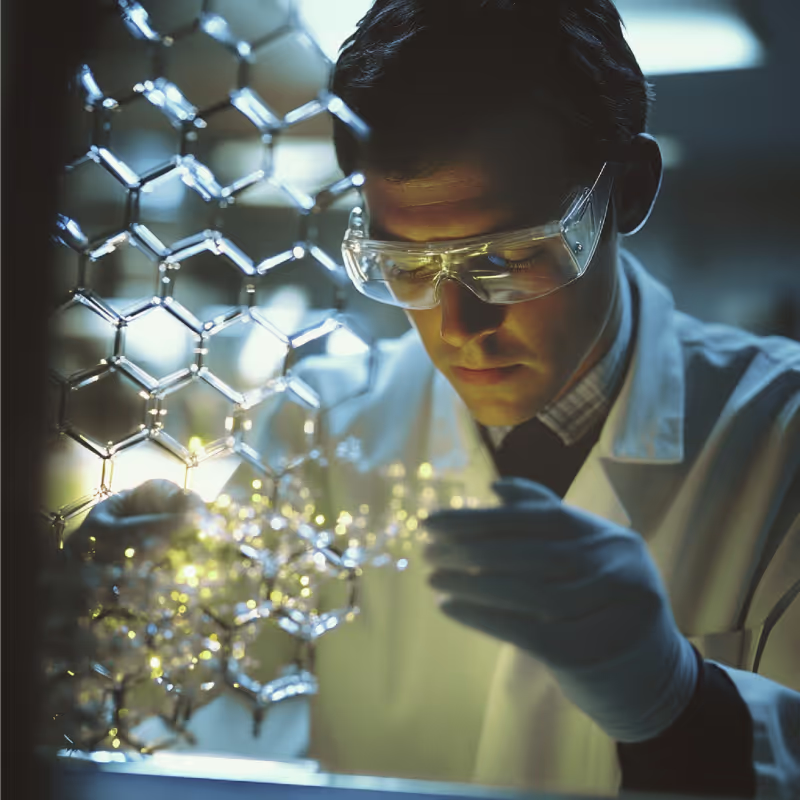
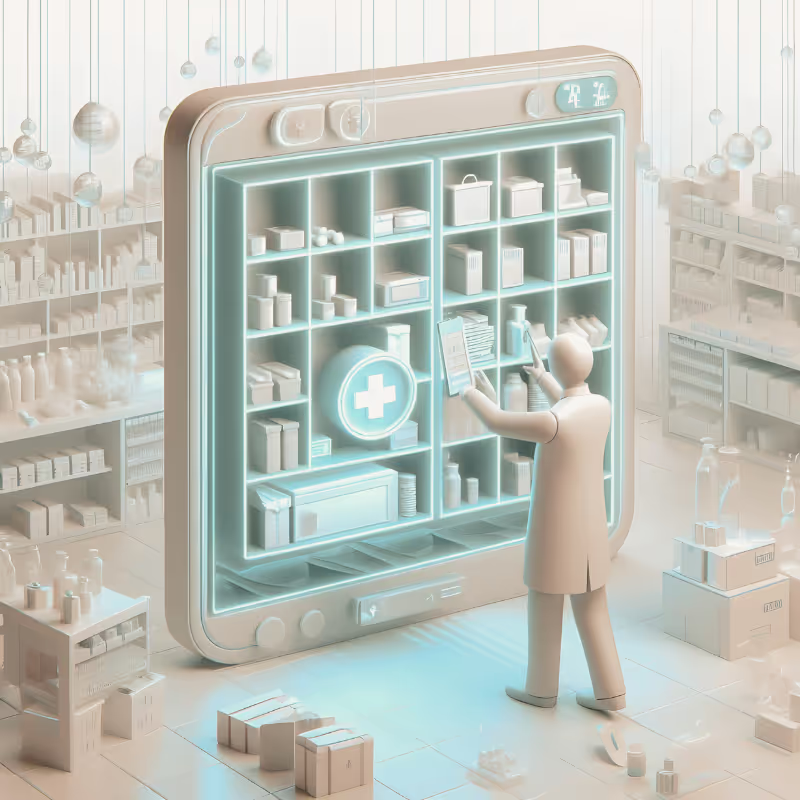

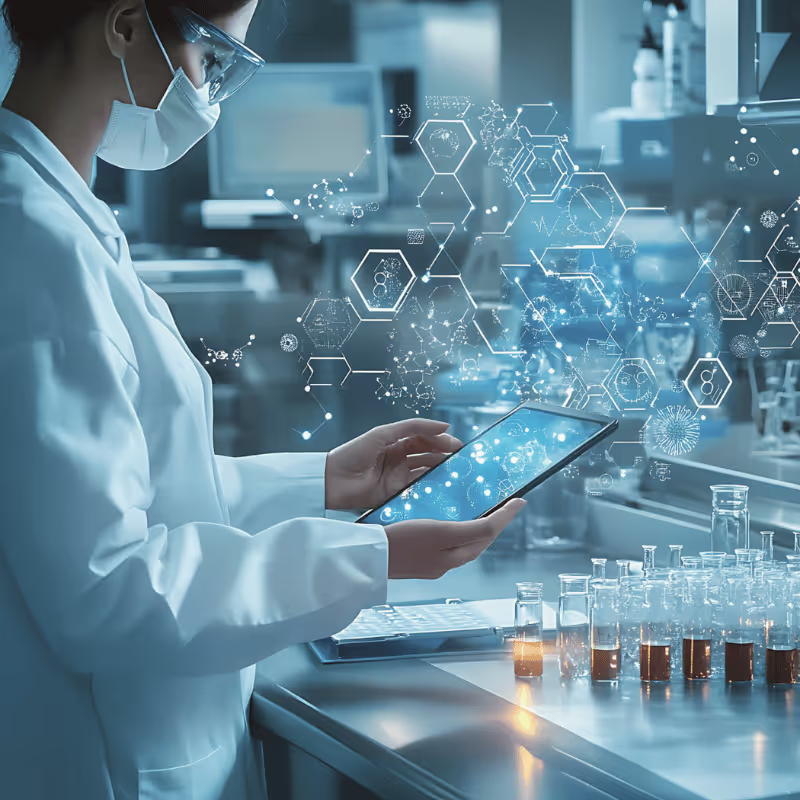

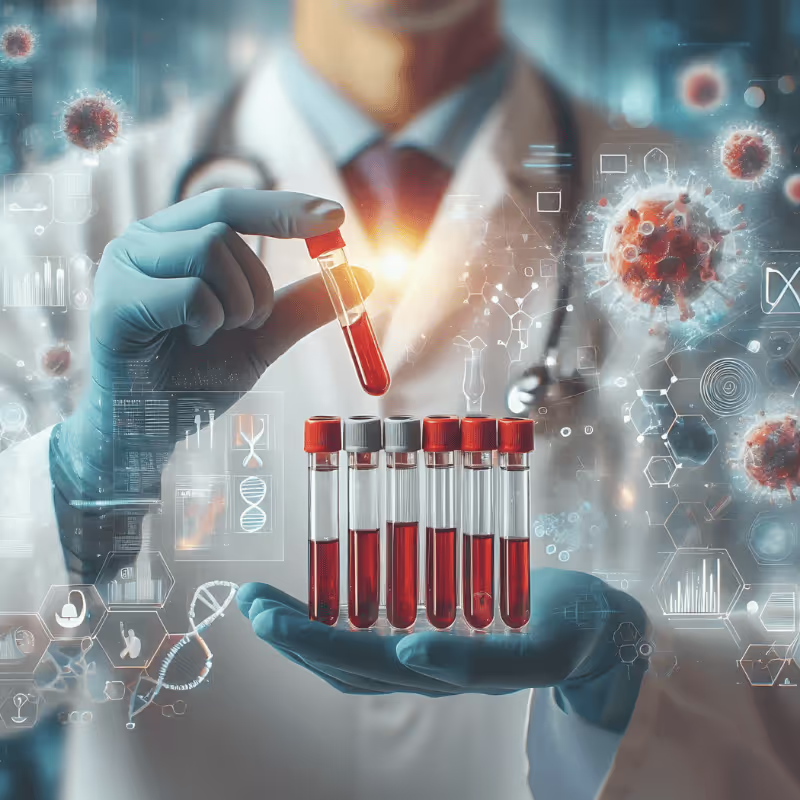
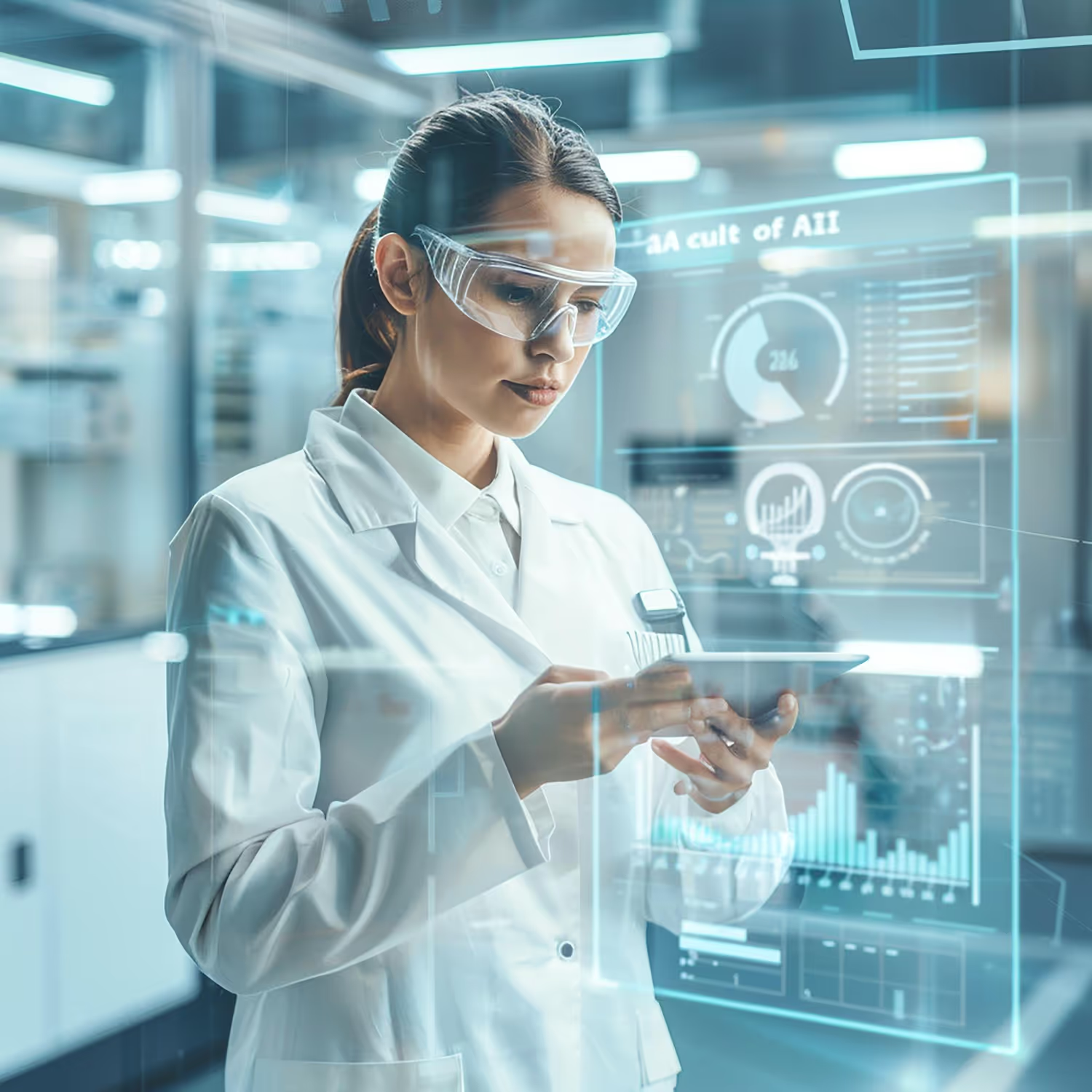
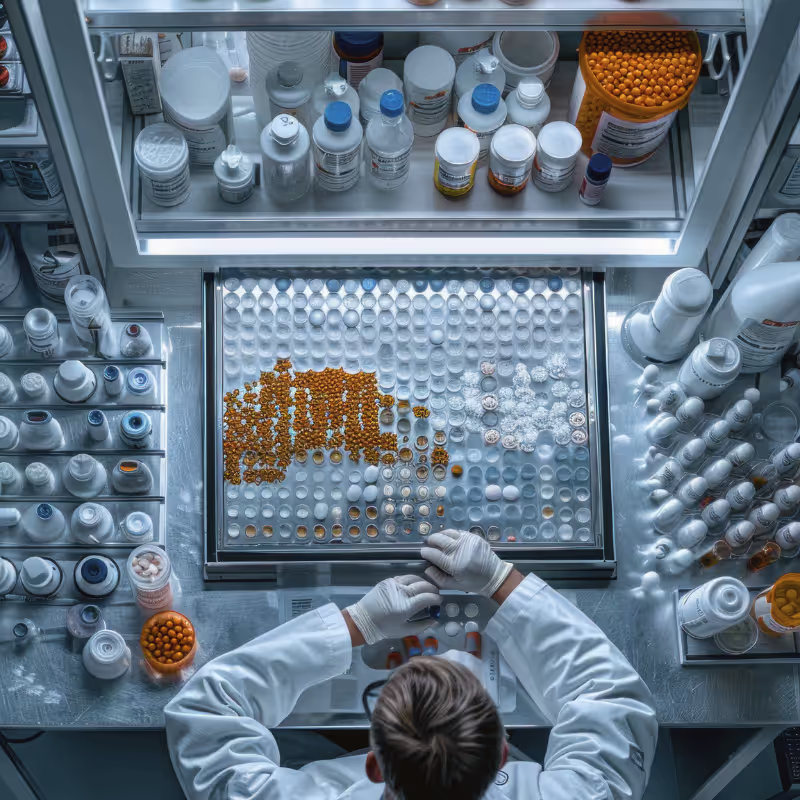
%20(5).avif)
.avif)


